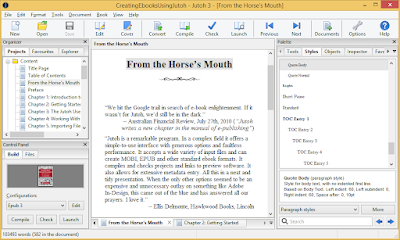Conflict - How To Keep Your Readers Turning Pages
Some writers are just too kind.
They hate to put their characters under any kind of pressure. They hate to see them losing, or struggling to survive. That's quite understandable - after all, they've become friends with these people. They're cheering for them. They want them to win through!
Now wait a moment. Wa..a..i..t.
It's your readers who are supposed to be cheering your characters on. It's your readers who want things to turn out for them. And it's your readers that you have to make suffer - because if you do, they won't be able to resist turning the page to see what happens next. They'll feel bad for your characters... heck, they may even shed a tear or two... but they will keep turning pages. They have to. They need to know how this all turns out!
Conflict is the engine of your story. It keeps the wheels turning; it keeps the characters moving. Take away conflict, and what have you got? A cheerful little afternoon tea-party, that's what. And like all afternoon tea parties... it can get a little boring. A few cream cakes and a few hours of conversation, and you've had enough. You want to go home.
At all costs, you must prevent your readers from packing up and going home. Or more accurately - to close the book that represents the cozy (but boring) tea party. Here are a few tips on building and sustaining conflict in your story.
1. Think "Drama"
In one corner of a restaurant you have a happy couple, gazing into each other's eyes. They're smiling. They're happy. In the another corner you have couple No. 2. Their body language is enough to tell anyone that there's trouble brewing. At first, they argue in low voices. Then things start to escalate. Their voices start to rise, and it ends when she throws wine in his face, sends her chair flying back, and storms out.
Which couple is attracting all the attention?
No contest! Naturally, it's the one involved in all that DRAMA. We're all drawn to conflict. We wonder about the reasons for it. We're eager to hear about the outcome. We HAVE TO KNOW MORE.
Give your readers drama, and you can be sure they'll keep coming back for more.
2. Portray Strong Emotions
If you don't allow your characters to experience emotion - and to show their emotion - then you're losing readers. One of the chief reasons that editors give for rejecting a novel is "lack of emotional punch". By making sure that you let your characters experience a full range of emotions, you are dramatically increasing your chances of acceptance.
In any one day, we all go through a whole lot of emotions. We're happy. We're sad. We're gloomy. We're ecstatic. We're jealous or envious or embarrassed.
Make a point of getting into your viewpoint character's skin. Become that character. First, imagine your character's appearance. Then climb inside. Look out through this person's eyes. See what she sees; hear what she hears; feel what she feels. And share those emotions with the reader.
If your viewpoint character is engaged in a conversation, make sure you give the reader more than talking heads by filtering everything through your character's emotions. We should 'hear' her thoughts; feel her embarrassment; experience her heart- wrenching fear. Emotions make your story live.
3. Pull the Thread Tighter
Once you have the reader tangled in drama and strong emotions, carefully pull the thread tighter. This is called 'get the heroine up the tree and then throw stones at her'. Or 'have him hanging on the edge of the cliff by his fingernails, then put a pack of wolves below him'. Just when it seems that things can't get any worse - make them worse! It's always possible.
Always think: "How can I raise the stakes? How can I make things really bad for my character? How can I add a twist that she's not expecting - just when she thinks everything is about to turn out all right after all?"
You can't have the tension turned up to "10" all the time, of course. If you do that, readers become accustomed to all the drama and it fails to have an effect. So give your characters time to wind down and plan their next move. Shift to a different point of view for a scene or two, while your main character is left in a precarious situation.
This lets the reader relax for a while - and the ensuing conflict when things go wrong (yet again!) is all the more powerful. But never let that thread slacken too much. Even when there's a lull, leave the reader on edge, knowing that things aren't settled yet! Gently, gently... keep stretching the tension... keep building the conflict.
Your readers just won't be able to help coming back for more.
(c) copyright Marg McAlister
Marg McAlister has published magazine articles, short stories, books for children, ezines, promotional material, sales letters and web content. She has written 5 distance education courses on writing, and her online help for writers is popular all over the world. Sign up for her regular writers' tipsheet at http://writing4success.com/









